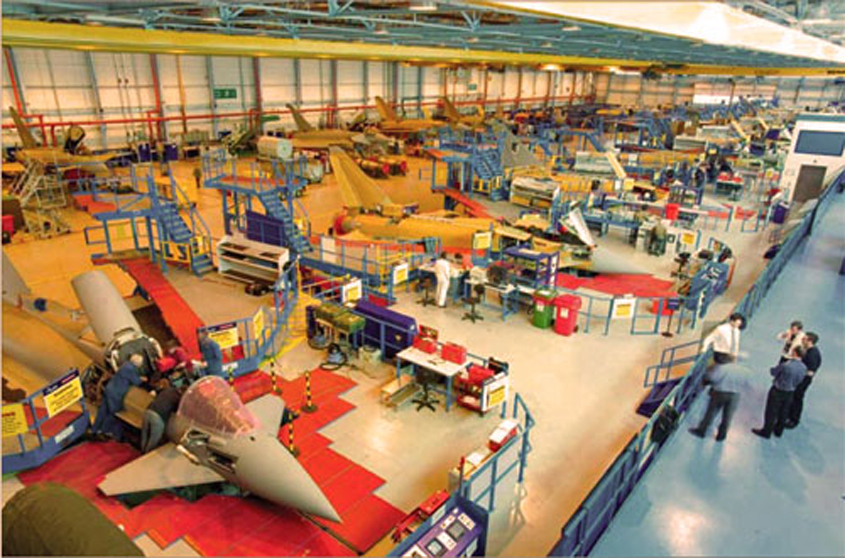Aircraft, helicopters, aero-engines, tanks, armoured vehicles, submarines and warships will be acquired on the SP model. The general staff qualitative requirement (GSQR) will be provided by the respective services and the Indian firms selected for the respective projects will seek foreign collaboration for manufacture, transfer-of-technology, assimilation of skills and development of human resources for the same. In the next step, it is expected that manufacture of metallic and non-metallic components, including composites and polymers, will be included in the private sector list. Manufacture of ammunition is also on the cards. This move is a bold step towards ensuring that India progressively reduces its present 65% dependence on imports for acquiring defence equipment.
Ultimately, an autonomous Defence Acquisition Organisation (DAO) is proposed to be set up within the Ministry of Defence, which will be patterned on the practices followed in US, UK, France and Australia—the CEO of this organisation will be of the rank of a Secretary. Presently, the MoD has a Secretary (Defence Production), while the overall leadership is provided by the Defence Secretary. The Department of Defence Production was set up post the 1962 China debacle: prior to that the ordnance factories, shipyards and aircraft manufacturing were supervised by Department of Defence Coordination. The then Director General of Ordnance Factories, Rear Admiral Daya Shankar, was appointed as Controller General of Defence Production and K. Raghuramiah became the Defence Production Minister. Setting up of DAO will be in line with the present day requirement of looking beyond government’s own establishment for acquiring military wherewithal.
While facilitating private sector participation in defence production, the government has to take the interests of the 41 ordnance factories under the Ordnance Factory Board (OFB) and defence PSUs into account. As per the present dispensation, these government entities will be competing with the private manufacturers. OFB has 164,000 employees. The defence PSUs—Hindustan Aeronautics(HAL), Mazagon Docks, Garden Reach Shipbuilders & Engineers, BEML, Bharat Dynamics, BEL, etc —also provide substantial employment. No policy can be crafted without considering the possible impact on this large workforce. Already murmur has emanated from certain quarters.
Defence production in India dates back to 1775, when the British began munitions manufacture at Calcutta’s Fort William and at Ishapore, in the vicinity of the cantonment town named by them Barrackpore (the site of the 1857 Mangal Pande uprising). During the Second World War, munitions, aircraft, shipbuilding facilities were augmented as sinew for the effort on the Japanese front. India thus acquired a substantial defence industry in 1947 (none of the units were located in Pakistan). Independent India increased its strength of 18 ordnance factories to the present 41 and HAL expanded. So did defence PSUs. Some new ones were set up.
Post war, Britain shut down many ordnance factories and ultimately privatised them. Arsenal, the football team, which recently lifted the FA Cup by beating Chelsea, was originally the team of the workers of Royal Arsenal, Woolwich: now only the football club retains the name, the factory ceased to exist long back. Royal Ordnance Factories were privatised in 1985: the assets and workforce were transferred to a listed company, Royal Ordnance plc. In 1987, British Aerospace acquired the company and BAe Systems was set up. By 1999 BAe Systems, a listed company, which had expanded trans-Atlantic to the US as well, acquired the residual defence production assets of the British government. Land and assets of the former government facilities were redeployed, within the market framework. (Niti Aayog has mooted a similar proposal for Air India privatisation.)
Narendra Modi’s PMO has been reviewing the working of the OFB for some months and in recent days
India’s Defence Research & Development Organisation (DRDO) produced from its ranks eminent scientist A.P.J. Abdul Kalam, who rose to be President of India. Its scorecard in developing new weapon systems and modern platforms for Air Force and Navy has been somewhat dismal. Apart from reviewing OFB and assigning new roles to defence PSUs, Defence Minister Arun Jaitley may like to turn his attention to DRDO and put on anvil an omnibus plan for robust Make in India initiative as corollary to the SP policy he has anchored.

